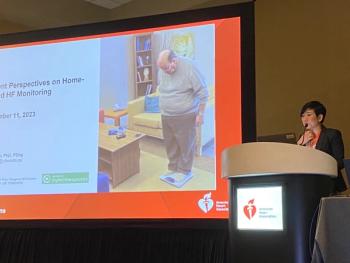
Inpatient survival rates increase at hospitals
Hospitals have made strides during the past decade to increase their inpatient survival rates. This is being accomplished at the same time that inpatient acuity (the severity of illness) has been steadily increasing.
HOSPITALS AROUND THE NATION, armed with a series of clinical quality-improvement initiatives, have made strides during the past decade to increase their inpatient survival rates. This is being accomplished at the same time that inpatient acuity (the severity of illness) has been steadily increasing.
A study by Thomson Healthcare's Center for Healthcare Improvement (CHI), examining patient mortality and survival rates from 1998 to 2006, estimates that improvements in care in U.S. hospitals translated into the survival of nearly 350,000 more patients than expected in 2006 alone.
"One would have expected that, if nothing changed between 1998 and 2006, the in-hospital mortality rate would have actually gone up as the acuity went up," says Kaveh Safavi, MD, chief medical officer and director of CHI for Thomson Healthcare, and one of the study's authors. "The fact that it not only does not go up, but it goes down, suggests that hospitals are dealing with sicker patients and getting better results."
According to the study, various sources suggest that in-hospital survival rates have been increasing for more than a decade. Estimates produced by the Agency for Healthcare Research and Quality, for example, show that in-hospital mortality rates declined from 2.7% in 1993 to 2.2% in 2003.
Using two databases, CHI tracked patient acuity information on more than 24 million patients discharged from more than 2,000 hospitals. The same databases were used to estimate observed trends in mortality rates. The result showed that the observed death rate decreased from 2.22% of all patients in 1998 to 1.92% during the first six months of 2006. At the same time, the risk-adjusted expected death rate rose from 2.37% to 3.12%.
HOSPITAL ADOPT BEST PRACTICE GUIDELINES
Part of the process to improve inpatient survival rates is establishing a baseline from which such improvements can be measured. The 1999 Institute of Medicine (IOM) report, "To Err is Human," called attention to the issue of patient safety, saying that there were 98,000 avoidable deaths occurring during hospital stays each year.
As a result of the IOM report, which is still cited in research today, numerous organizations voluntarily developed guidelines to improve patient safety.
Dr. Safavi believes that hospitals have been concerned about patient outcomes for years. What's different now, he notes, is that there is a series of clinical best practices that are proven to be effective in reducing hospital inpatient deaths over a period of years, and more hospitals are adopting these best practices.
"This improvement reflects, in part, an effort by hospitals to use clinical practices that have been shown to improve patient outcomes and reduce the amount of unexpected variation in care practices," Dr. Safavi says. "This reflects a constantly improving landscape."
Specifically, he points to more hospitals implementing evidence-based, life-saving interventions recommended by the Institute for Healthcare Improvement (IHI). These interventions include:
Newsletter
Get the latest industry news, event updates, and more from Managed healthcare Executive.


















































